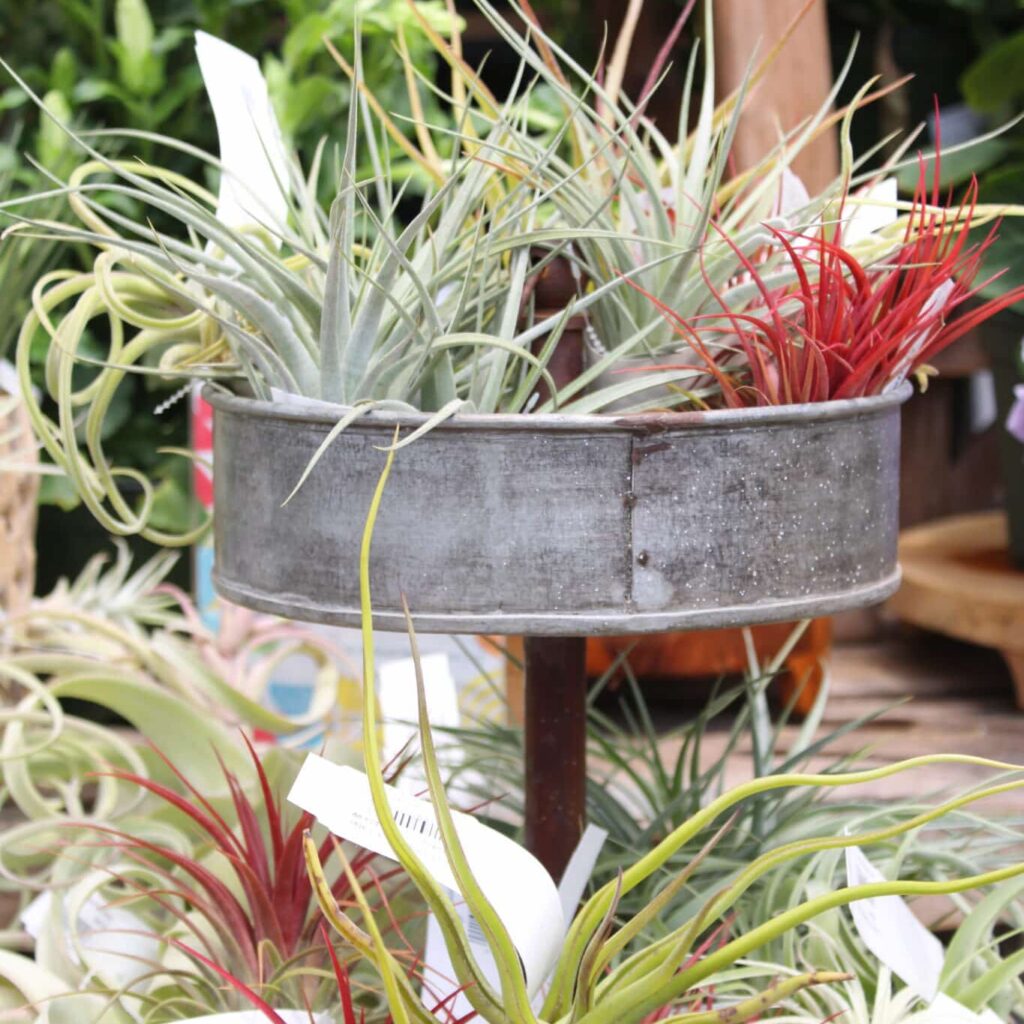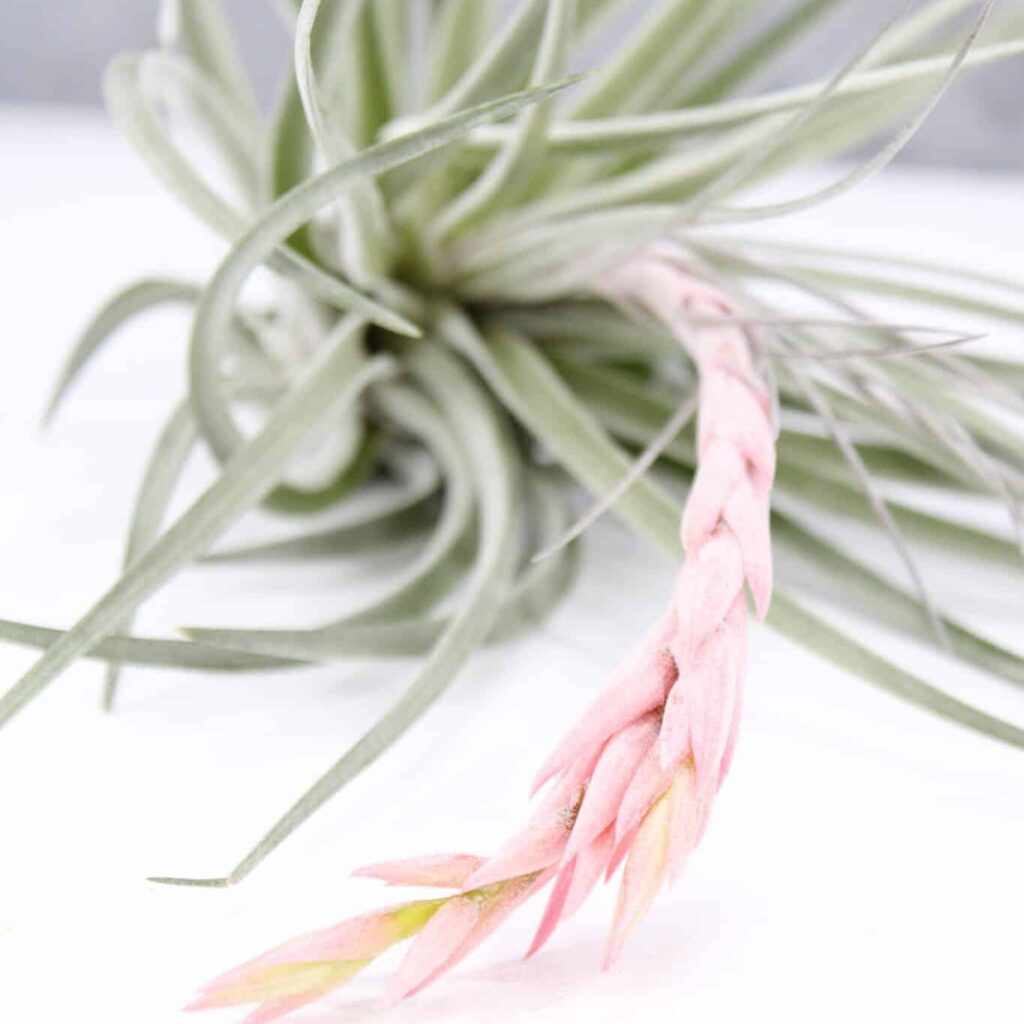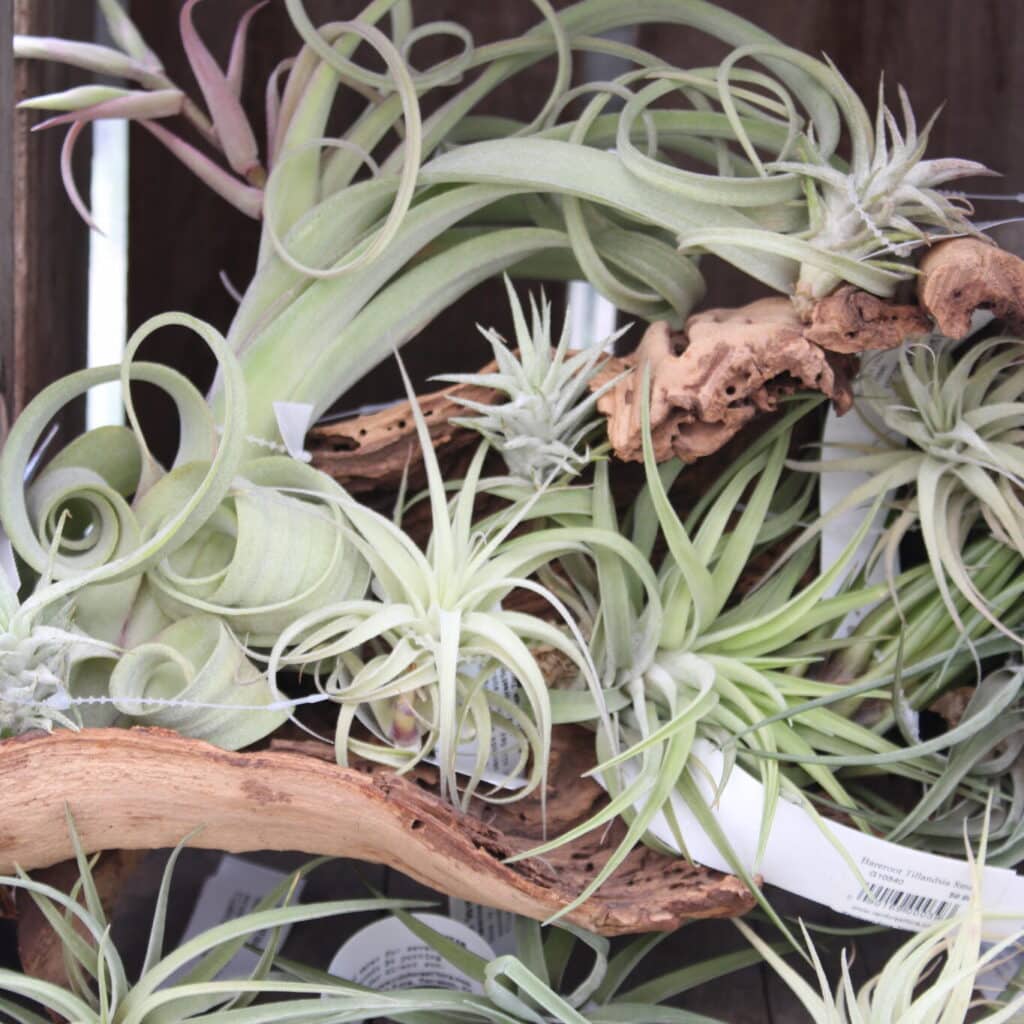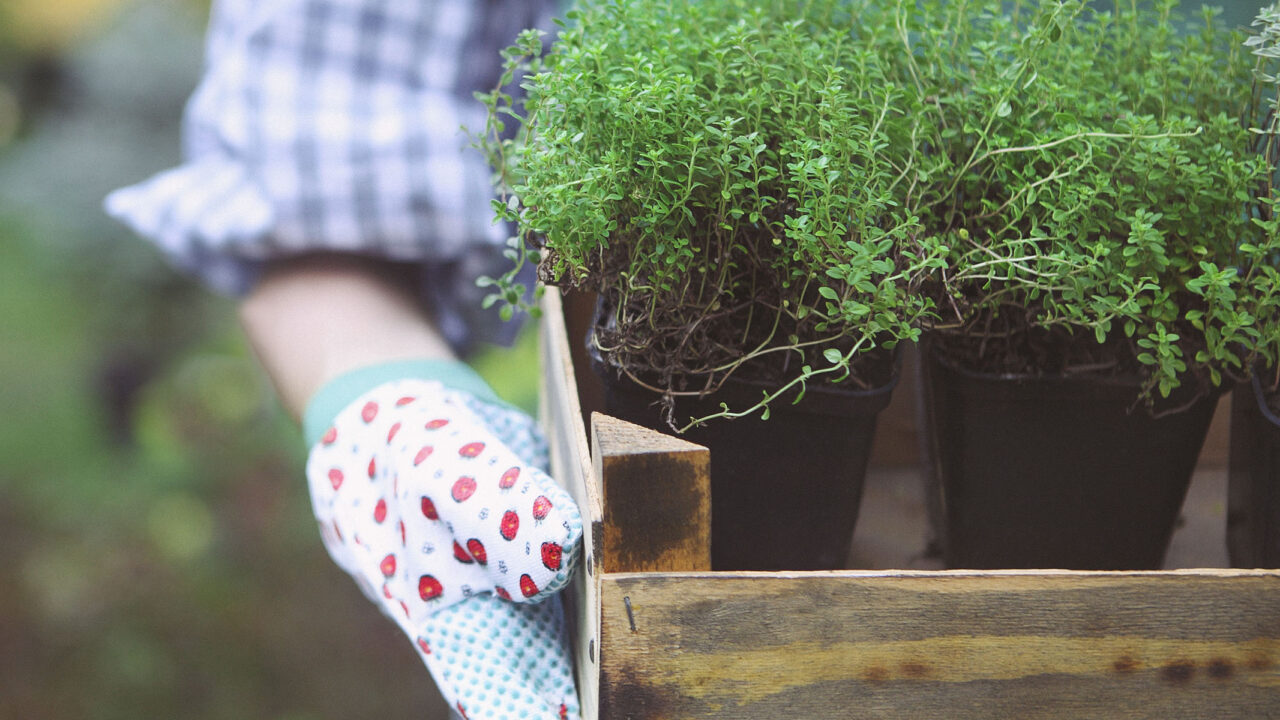Tillandsia. You know, those little spiky plants you find glued to seashells and driftwood. Ever wonder how they survive without any soil? Turns out they are epiphytes – which means they absorb moisture and nutrients from the air. They’re the largest genus of the bromeliad family, native to the southern parts of the US, Central and South America. A common Tillandsia found in Houston is Spanish moss (Tillandsia usneoides), hanging from the limbs of oak trees. Exotic and beautiful, you may be tempted to think they would be difficult to grow. They’re actually not and you can easily create some dramatic displays.
While some varieties are both terrestrial and epiphytic, soil is not necessary to grow these plants. Their leaves have specialized cells that absorb water and nutrients. Their roots and spiky leaves make it easy for them to attach to a host. They’re not parasitic – they just need a place to anchor where they receive light and moisture.
Like other bromeliads, their life cycle ends after blooming once at maturity. New plantlets or pups form around the base or the stem of the mother plant. They eventually complete the same cycle in 1-3 years depending on environmental conditions. The blooms on many of these plants are vibrant, colorful, and exotic looking.
Caring for Tillandsias varies somewhat based on their color and texture. Generally, varieties with stiff, gray, or faded leaves require more sunlight and less watering. Varieties with softer, lush green leaves require less light and frequent watering.
Here Are a Few Easy-Care Tips:
1 Avoid direct sunlight – they do best with strong indirect light (especially for varieties requiring more sunlight). Indoors – near a window or under a fluorescent light – but avoid direct sunlight on a windowsill as it may burn your plants. For outdoors in our Houston summers, morning sun sparingly. Shady areas are best, remember these typically grow under the canopy of forest trees. Dappled sunlight, without sunburn.
2 Do not let them dry out. They enjoy frequent misting, especially the green, softer ones. Humidity alone is not enough. The leaves need to come into contact with water. In their natural habitat, this occurs through rain, dew, dense fog, etc. A good drenching or rinsing until dripping wet is recommended. Try rinsing them in the kitchen sink with your spray nozzle. Do not use distilled water as it absorbs nutrients from the plant. Water plants growing indoors – 2-3 times a week and outdoors – 3-4 times per week. This is a general rule of thumb. You want them to dry out between watering, especially the base – so if you remove them from their containers, do not put them back until the base is dry. Simply misting your plants occasionally is not enough, they need a good soaking on a regular basis.
3 Do not expose them to freezing temperatures. Keep them above 40 degrees. Most thrive in greenhouses so they can take the heat, provided you water more frequently. They do well indoors, but varieties requiring more moisture will need frequent watering. Plants can be attached using fishing line or floral wire (non-copper).
4 Fertilizing is usually not needed. They are susceptible to over-fertilization, and it can kill them. If you do fertilizer, use 1/4 strength. It can speed growth, which in turn produces better flowers and more pups. Avoid any fertilizers with urea, copper, boron, or zinc. Copper kills Tillandsias.
5 Think vertical as well as horizontal. There are many creative ways to display these plants. You can hot glue them to driftwood, wreaths, seashells, or place them inside terrariums, on a windowsill or mount them to plant trellis or wire obelisks. The second video below (Bok Tower Gardens) demonstrates a beautiful vertical display using fishing line to suspend the plants.
Here are a few display photographs taken from Buchanan’s Greenhouse
Want to learn more? Come into Buchanan’s and see our displays in the greenhouse. We’ve got a large selection of plants to choose from.





